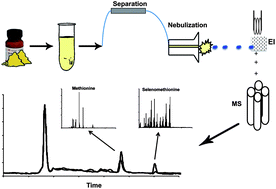Selenium speciation by liquid chromatography-particle beam/mass spectrometry (LC-PB/MS): application to a yeast reference material and synthetic urine
Abstract
Presented here is the comprehensive speciation of organic and inorganic selenium species via liquid chromatography-particle beam/electron impact


 Please wait while we load your content...
Please wait while we load your content...